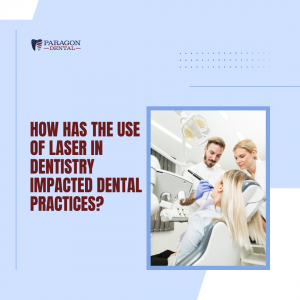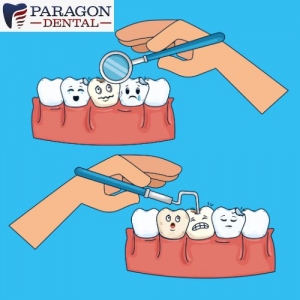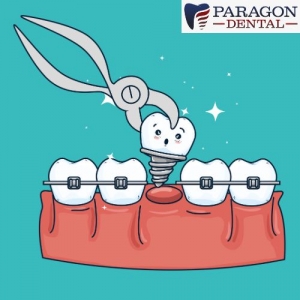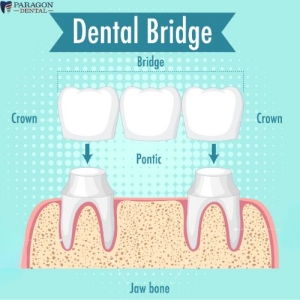Are you thinking about getting a dental implant? This blog is your go-to guide, where we’ll explain everything you need to know before you make that important decision.
In this easy-to-understand blog, we’ll walk you through the important things to consider before getting a dental implant. From finding out if you’re a suitable candidate to understanding how the procedure works and how to take care of it afterward, we’ll cover all the essential details.
Join us on this informative journey, and you’ll be well-prepared for a successful dental implant experience.
Understanding Dental Implants: What Are They?
Dental implants are like remarkable replicas of natural teeth. They rely on support from your jawbone, just as real teeth do, and they perform all the essential functions of natural teeth.
A dental implant consists of three parts:
Implant fixture: It is the part of the implant that is placed securely inside the bone. This mimics the role of a tooth root. This ensures that the implant does’t slip or slide, allowing you to eat, speak, and smile with confidence. It is made up of titanium, which is biocompatible. It means that it does not harm your body.
Abutment: It acts as a connector and links the implant fixture to the restoration above. Once the implant has fused with the jawbone, the abutment is attached to provide support for the visible restoration.
Restoration: The final part of the dental implant is the restoration, which takes the place of the missing tooth. After the implant fixture and the abutment are securely in place, the restoration is attached.
This can be in the form of a single crown for replacing a single tooth, a bridge for multiple adjacent missing teeth, or a full denture to restore several missing teeth in a row.
The restoration is custom-made to blend seamlessly with your natural teeth, creating a beautiful and functional smile.
Is a Dental Implant Right for You?
Determining if a dental implant is the right choice for you involves several factors that your dentist will carefully assess. Your oral health, bone density, and overall medical condition play significant roles in the decision-making process.
Ideally, you should have healthy gums and enough jawbone to support the implant.
Two critical conditions necessary for implant success are being non-diabetic and a non-smoker. Diabetes can impact the healing process and increase the risk of complications, while smoking can hinder proper healing and integration of the implant with the jawbone.
The Dental Implant Procedure: Step-by-Step Overview
The dental implant procedure usually comprises four sittings. However, some individuals may require an additional sitting for bone grafting before proceeding with the following steps:
First sitting:
The dentist makes a small incision in the gums to access the jawbone. A hole is then carefully drilled into the jawbone to accommodate the implant fixture. The implant fixture, usually made of titanium, is then securely placed in the drilled hole.
After the implant is positioned, the gums are sutured back in place to allow for the healing process.
Over the next few months, the implant undergoes osseointegration, during which it fuses with the jawbone, providing a stable foundation for the replacement tooth.
Second sitting:
The dentist performs a minor surgical procedure to attach the abutment securely on top of the implant fixture, just above the gum line. The abutment is attached to the implant fixture, serving as a connector for the final restoration.
After placing the abutment, your gums are allowed to heal for a few days or weeks.
Third Sitting:
A few days or weeks after the abutment placement, once your gums have healed, the dentist takes an impression to create a custom-made restoration that matches your missing tooth’s shape and color.
The restoration could be a crown, bridge, or denture, depending on your dental needs.
Final Sitting:
Lastly, the dentist places the custom-made restoration onto the abutment, completing your dental implant.
Aftercare and Maintenance Tips for Your Dental Implant
Brush and floss regularly to maintain excellent oral hygiene.
Avoid smoking and tobacco products for better healing and success.
Wear a nightguard if you grind your teeth.
Attend regular dental check-ups for early detection of any issues.
Notify your dentist of any changes or discomfort.
Conclusion:
In conclusion, dental implants offer a reliable and aesthetically pleasing solution for replacing missing teeth. By understanding the essential factors and undergoing a thorough evaluation by your dentist, you can determine if a dental implant is the right choice for you.
With proper aftercare and maintenance, including good oral hygiene practices and regular dental check-ups, you can enjoy the benefits of a long-lasting and fully functional dental implant.
Need a dental implant in Modesto?
At Paragon Dental, we strive to provide high-quality dental care to our patients.
Call us now for an appointment at (209) 548-0100, or come by our clinic at Paragon Dental, 1108 Oakdale Road, Suite A, Modesto, California 95355.
https://www.dentalcaremodesto.com/blogs/information-before-getting-dental-implant/
In this easy-to-understand blog, we’ll walk you through the important things to consider before getting a dental implant. From finding out if you’re a suitable candidate to understanding how the procedure works and how to take care of it afterward, we’ll cover all the essential details.
Join us on this informative journey, and you’ll be well-prepared for a successful dental implant experience.
Understanding Dental Implants: What Are They?
Dental implants are like remarkable replicas of natural teeth. They rely on support from your jawbone, just as real teeth do, and they perform all the essential functions of natural teeth.
A dental implant consists of three parts:
Implant fixture: It is the part of the implant that is placed securely inside the bone. This mimics the role of a tooth root. This ensures that the implant does’t slip or slide, allowing you to eat, speak, and smile with confidence. It is made up of titanium, which is biocompatible. It means that it does not harm your body.
Abutment: It acts as a connector and links the implant fixture to the restoration above. Once the implant has fused with the jawbone, the abutment is attached to provide support for the visible restoration.
Restoration: The final part of the dental implant is the restoration, which takes the place of the missing tooth. After the implant fixture and the abutment are securely in place, the restoration is attached.
This can be in the form of a single crown for replacing a single tooth, a bridge for multiple adjacent missing teeth, or a full denture to restore several missing teeth in a row.
The restoration is custom-made to blend seamlessly with your natural teeth, creating a beautiful and functional smile.
Is a Dental Implant Right for You?
Determining if a dental implant is the right choice for you involves several factors that your dentist will carefully assess. Your oral health, bone density, and overall medical condition play significant roles in the decision-making process.
Ideally, you should have healthy gums and enough jawbone to support the implant.
Two critical conditions necessary for implant success are being non-diabetic and a non-smoker. Diabetes can impact the healing process and increase the risk of complications, while smoking can hinder proper healing and integration of the implant with the jawbone.
The Dental Implant Procedure: Step-by-Step Overview
The dental implant procedure usually comprises four sittings. However, some individuals may require an additional sitting for bone grafting before proceeding with the following steps:
First sitting:
The dentist makes a small incision in the gums to access the jawbone. A hole is then carefully drilled into the jawbone to accommodate the implant fixture. The implant fixture, usually made of titanium, is then securely placed in the drilled hole.
After the implant is positioned, the gums are sutured back in place to allow for the healing process.
Over the next few months, the implant undergoes osseointegration, during which it fuses with the jawbone, providing a stable foundation for the replacement tooth.
Second sitting:
The dentist performs a minor surgical procedure to attach the abutment securely on top of the implant fixture, just above the gum line. The abutment is attached to the implant fixture, serving as a connector for the final restoration.
After placing the abutment, your gums are allowed to heal for a few days or weeks.
Third Sitting:
A few days or weeks after the abutment placement, once your gums have healed, the dentist takes an impression to create a custom-made restoration that matches your missing tooth’s shape and color.
The restoration could be a crown, bridge, or denture, depending on your dental needs.
Final Sitting:
Lastly, the dentist places the custom-made restoration onto the abutment, completing your dental implant.
Aftercare and Maintenance Tips for Your Dental Implant
Brush and floss regularly to maintain excellent oral hygiene.
Avoid smoking and tobacco products for better healing and success.
Wear a nightguard if you grind your teeth.
Attend regular dental check-ups for early detection of any issues.
Notify your dentist of any changes or discomfort.
Conclusion:
In conclusion, dental implants offer a reliable and aesthetically pleasing solution for replacing missing teeth. By understanding the essential factors and undergoing a thorough evaluation by your dentist, you can determine if a dental implant is the right choice for you.
With proper aftercare and maintenance, including good oral hygiene practices and regular dental check-ups, you can enjoy the benefits of a long-lasting and fully functional dental implant.
Need a dental implant in Modesto?
At Paragon Dental, we strive to provide high-quality dental care to our patients.
Call us now for an appointment at (209) 548-0100, or come by our clinic at Paragon Dental, 1108 Oakdale Road, Suite A, Modesto, California 95355.
https://www.dentalcaremodesto.com/blogs/information-before-getting-dental-implant/





